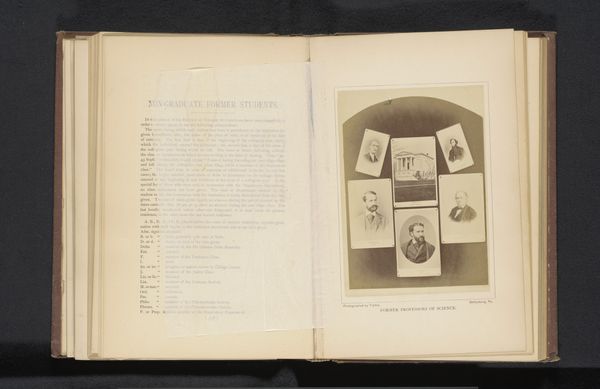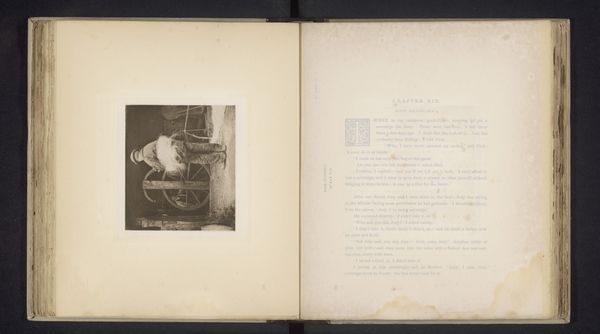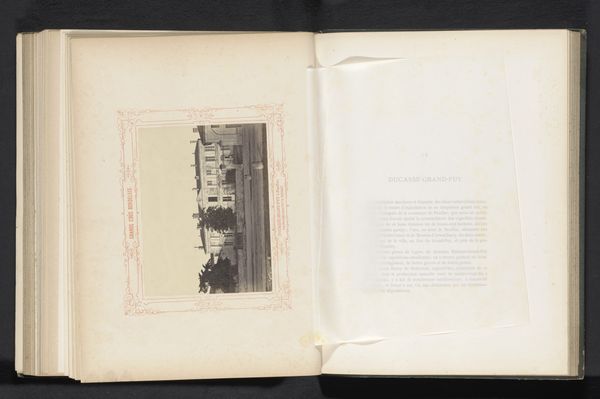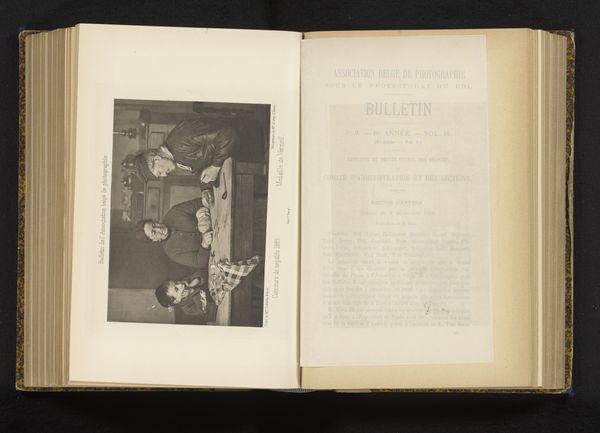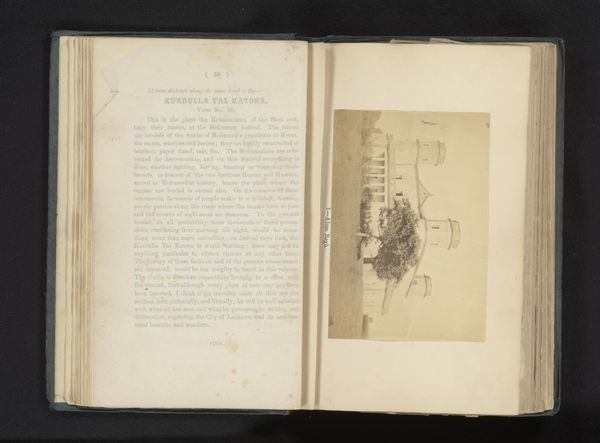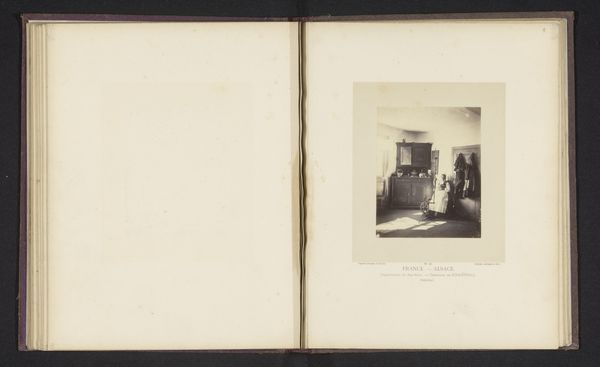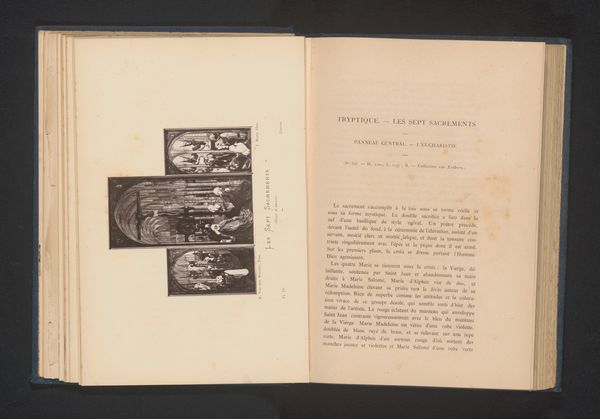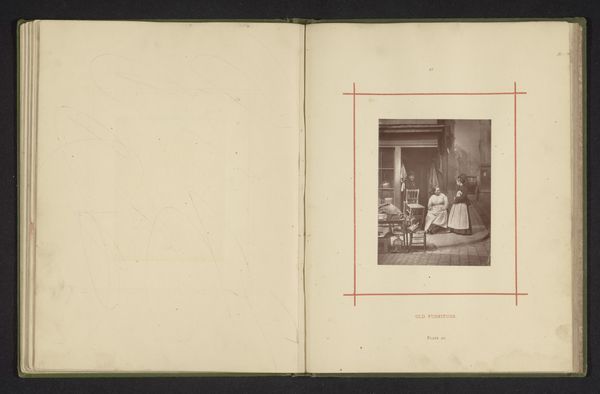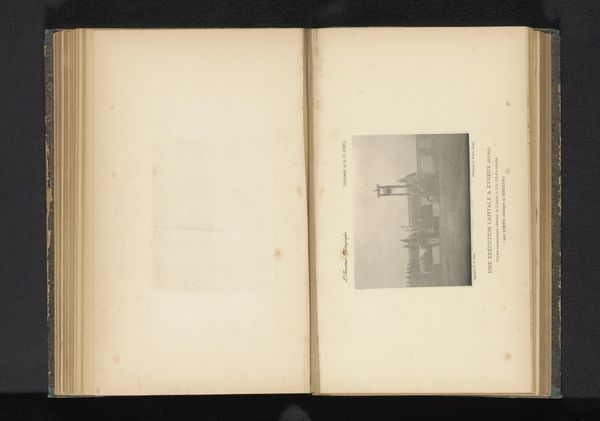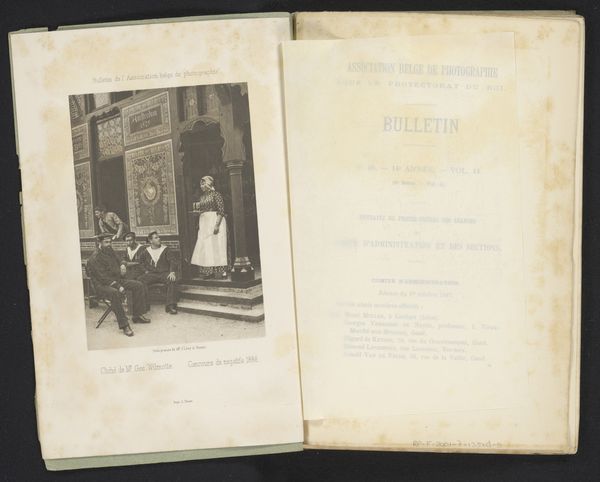
print, photography
#
portrait
#
aged paper
#
book binding
#
homemade paper
#
paper non-digital material
#
pictorialism
#
paperlike
# print
#
impressionism
#
sketch book
#
photography
#
personal sketchbook
#
thick font
#
genre-painting
#
golden font
#
academic-art
#
historical font
Dimensions: height 143 mm, width 112 mm
Copyright: Rijks Museum: Open Domain
Curator: Guillaume Oury’s print, "Schilder zittend in een atelier," predates 1883. It’s an evocative glimpse into an artist’s studio. What are your first impressions? Editor: Well, initially, the composition feels a little claustrophobic, doesn't it? All those framed artworks leaning against the wall seem to create an atmosphere of artistic intensity or perhaps even... constraint? Curator: Precisely. Oury uses this dense arrangement to convey the creative spirit – note the tight interior space contrasting with the landscapes depicted *within* the paintings on the wall; a neat play between the tangible here and the idyllic beyond. Oury is deliberately playing with perspective. Editor: That tension speaks to the Romantic era's struggle to reconcile the interior life with the allure of the natural world, the imagination versus lived experience. The painter sitting in quiet contemplation becomes an icon of the artistic process. Curator: And observe how the greyscale palette adds a timeless, almost dreamlike quality to the print, softening its lines, especially on that intriguing sketch book lying on the floor. Editor: It’s interesting how the artist sitting in the photograph almost seems like just another object within it: a posed prop alongside easels, artworks, and tables – just like another painting waiting to be seen or an antique to be sold. Curator: Indeed, but what if that impression *is* Oury’s true objective? He invites us to deconstruct that entire world visually and to question how the artist functions *within* it. Note how our sightline travels straight into the scene via the fallen sheets and is pulled vertically by the stacked and framed art. Editor: So the objects stand as a kind of silent alphabet – a set of images in a painterly lexicon through which emotions can be translated. By presenting it this way, he creates a mirror to culture. Curator: Absolutely, by focusing on its semiotic richness. Editor: It’s tempting to spend ages decoding Oury’s photograph… I find this artist both inviting and deeply complicated. Curator: And I suspect he’d want it no other way.
Comments
No comments
Be the first to comment and join the conversation on the ultimate creative platform.
